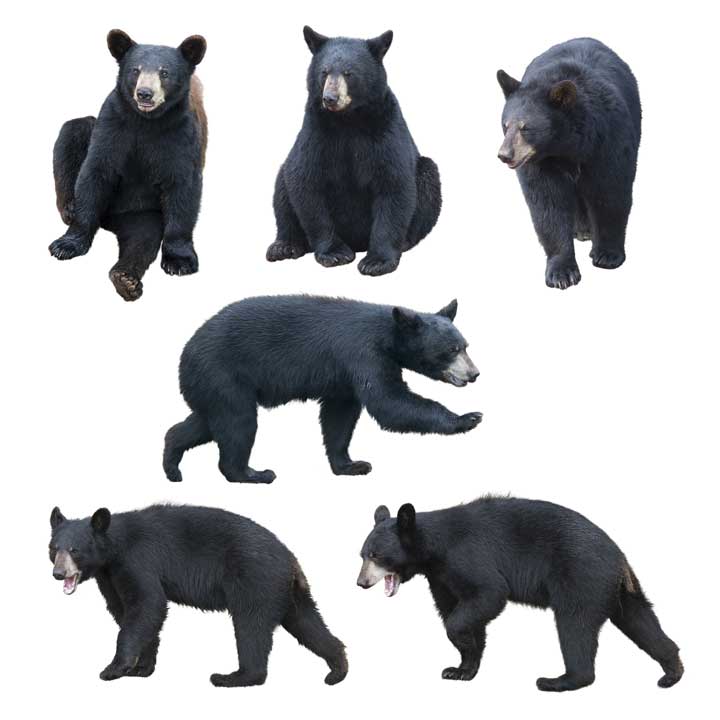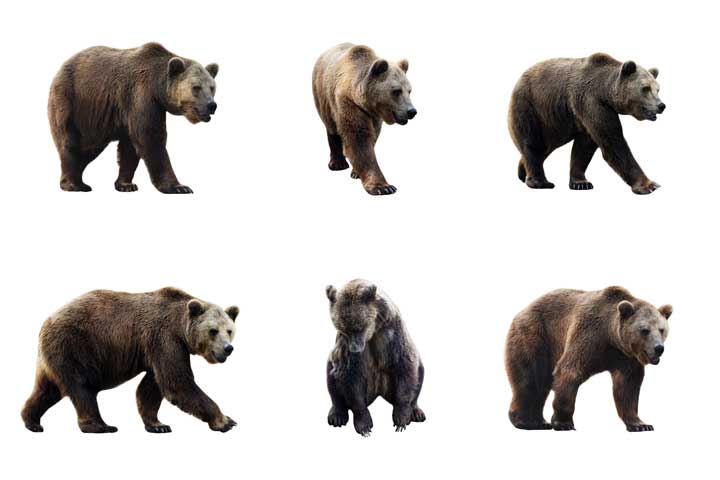Being outside is natural, and it’s important to connect with nature for our mental, physical, and spiritual health. While solo hiking can be relaxing, and it’s important to take proper precautions if you’re spending time alone outdoors. If you live in an area rife with wildlife, you know how scary it can be to consider the possibility of a bear encounter. Here, we’ll touch on what to do – and what not to do – if you encounter a bear in the wild.
Bear Attack Statistics
Knowing what to do in case of a bear attack is important. It’s also important to remember that you’ll likely never need to defend yourself from a bear.
Check out these stats on bear attacks in the United States:
- Bear attacks are rare. You’re much more likely to see a bear than to suffer an attack.
- There are some areas of the United States – like Yellowstone National Park – where bear attacks are more likely. Animals in Yellowstone aren’t inherently more dangerous, but the behaviors of many visitors can stress animals, making an attack more likely. This example is tough to watch, but can help you to understand why bear attacks are more common in this area.
- Murder by a person is more common than death by a black bear.
- Even in areas known for their bears, attacks are unlikely. In Alaska, you’re more likely to suffer from a moose attack than a bear attack.
Know Your Bears
Knowing the difference between a black bear and a brown bear can save your life. Successfully fending off an attack requires a different approach for each type of bear.
Differences between black and brown bears include:
- Color – Brown bears tend to be brown (clearly), but black bears can range from nearly white to nearly black. Don’t rely on color alone to identify a bear.
- Facial shape – Brown bears have a prominent forehead, while black bears have a pointy head, nose, and ears.
- Body – Brown bears have a pronounced hump on their shoulders – black bears have a more streamlined upper body.
- Size – Brown bars tend to be much bigger than black bears. In autumn, both bears increase in size as they begin to prepare for the cold months ahead.
- Claws – Brown bears have long, light colored claws while black bears have short, dark claws.
- Location – Brown bears live in the Northwestern U.S., while black bears are more widely spotted across the country.


Prevention: The Best Way To Stay Safe
The best way to stay safe from bears is to prevent encounters in the first place. While seeing a bear can be exciting, it’s key to remember that these are wild animals, and by entering the woods, you are entering their territory.
To decrease the likelihood of a bear encounter, avoid hiking at dusk and dawn – this is when bears are most likely to be out and about. Travel in groups whenever possible. Make noise (your speaking voice is best) to alert resting bears that you’re approaching. This is especially important when you turn a corner or approach a blind spot.
If you have food with you, keep it out of reach of bears at your campsite. Don’t keep food in your car or in your tent – bears can smell it, and they’ll destroy anything in it’s path to get a snack. Don’t cook at your campsite, and be sure to properly dispose of or store food (stringing it up between two trees is ideal).
Prepare yourself by bringing bear spray, but do your research if you’re thinking about bear bells. These small bells don’t appear to do much to deter bears from attacking, and some research even suggests that these noises may attract bears. Another idea to reconsider: hiking with your dog. While a dog may alert you of a bear faster than you can spot them, they can also stir up a bear’s predatory instincts.
Bear Encounters
In the rare occasion that you encounter a bear in the wild, it’s unlikely that the bear will want anything to do with you. A non encounter is most common: this occurs when a bear notices you and chooses to leave. Peaceful bear encounters occur when a bear crosses your path and continues on his way.
Habituated bear encounters veer into dangerous territory. These occur among bears who have become used to humans, and may be looking for food. Habituated bear encounters involve a confident bear who knows that humans have something he or she may want. Defensive bear encounters involve a bear that feels threatened by a human. This bear doesn’t necessarily want to hurt you, but they’ll do what they need to do to protect themselves, their recent prey, or their cubs. A defensive bear attack can also occur when a bear wants something that you have (such as a recent hunting kill). Defensive bear attacks aren’t meant to kill you, however, a defensive attack from a grizzly is almost certain to cause fatalities.
Predatory bear encounters are what hikers, hunters, and campers fear the most: when a bear is coming after a person with the intent to kill. The least common type of bear encounter, a predatory attack is most dangerous when perpetrated by a mother with young cubs. White bears are most likely to perpetuate a deadly attack against humans. Nerves of steel – and a rifle – are the best line of defense against such an attack.
It’s Happening: A Bear Is Approaching. Here’s What To Do Next
Understanding the difference between black and brown bears becomes essential when you encounter a bear in the wild. After you identify the type of bear in question, make your next move.
In the event that the bear spots you, don’t run – this can trigger their predatory instincts. Don’t climb a tree – a bear may follow you.
If you’re with others when you spot a bear, spread out.
If a bear stands up on its hind legs, stay as calm as possible – it’s likely that they’re just trying to grasp the situation. Bears don’t see very well, and standing up can help them improve their view and determine that there isn’t a threat. If the bear begins to back away slowly, do the same. Follow a diagonal trajectory so that it’s clear you’re not interested in further interaction.
If the situation escalates, your next moves are key. If you’re dealing with a charging bear, use bear spray if you can. If you can’t use the spray and you’re dealing with a brown bear, it’s time to play dead. Protect your organs, keep your backpack on to protect your back (this can help fend off a brown bear’s claws – the sturdier your backpack, the better). Lie prone on the ground with your legs out in a V shape to prevent the bear from flipping you over (keep your hands behind your neck), or lie on your side with your knees to your chest, using your elbows to cover your face, protecting your neck with your hands. No matter what happens, continue to play dead. After the bear leaves, it may watch from a distance to find out whether you’re actually dead. Remain still for longer than you think necessary.
Dealing with a black bear? You’ll need a different approach. Black bears are more aggressive than brown bears, and in order to survive, you’ll need to be aggressive in return. Don’t be aggressive just for show – that’s not how life in nature works. If you’re taking the stance of showing up as bold, aggressive, and ready to fight, you need to be prepared to back it up with action. Don’t play dead – fight back, and fight for your life. Fight with purpose. Your goal is to hurt the bear. The weak spot of the bear is the nose. Hitting the bear anywhere else won’t do damage, and will serve to further upset the bear. Throw stones, hit the bear with a long/ thick piece of wood – use whatever you have at your disposal to fight.

Remember, like I said before: when you’re hiking in the woods, you’re in nature. While this is where you belong, it’s where bears belong as well. Don’t taunt a bear, don’t try to get closer to take a photo. If you encounter a bear, respect their space, and they’re likely to do the same.




